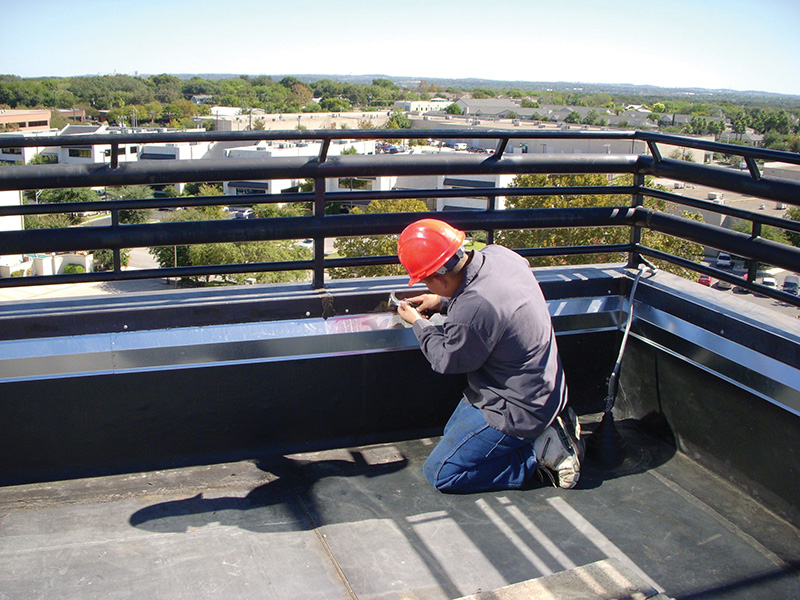Assessing your property after a violent storm.
By Tyler Fleming
Powerful storms are a fact of life across the U.S., especially in the spring. They can leave unprepared building owners with extensive roof damage, some of which might not become obvious until unexpected leaks and puddles show up inside your building.
So, what can building owners do after a storm? Here are some tips on assessing your property and the steps you should take after your building has experienced severe storm damage:
Puddling on the Roof
If you’re able to do so safely from the ground, survey your roof for puddles of water. Water should run off of your roof immediately. Take notice of any debris that may be interfering with your drainage system.
 Check for Clogged Roof Drains
Check for Clogged Roof Drains
The gutters are an easy place to identify any dents or cracks which should give you an idea of how badly the roof systems are damaged. Shingles, fallen tree branches and debris may also accumulate in the gutters.
Inside Leaks
Assess the inside of your building. Look for any water leaks or any visible rays of light shining through the ceiling where it shouldn’t be. Take notice of any paint bubbling on the walls. Because the aftermath of water damage may not show immediately, continue to keep an eye out for possible signs of a leak.
Evaluate the Ground
Look around your building for any signs of storm damage, including broken tiles, shingles or glass that might have fallen off as a result of wind or hail damage.
Keep notes on all of the damage you can safely see
Reaching out to a reliable roofing contractor is necessary to professionally assess your building’s damage and start repairs. Consider these steps after your building experiences storm damage.
Don’t Touch Anything
You should never try to access your roof after a severe storm. Also, don’t attempt to remove debris that is on or making contact with your roof by yourself. Doing so may result in creating more damage to your building or bodily injury. Leave that to the professionals.
File an Insurance Claim
If you notice damages, talk with your insurance company about filing a claim as soon as possible. Most insurance companies will want a detailed list of the damage; they may have you contact a roofing contractor before they are able to finish your claim. A quick filing can help ease the costs of roof repairs and get your building back in shape sooner.
Find the Right Roofing Contractor
Find an experienced roofing contractor to survey the area for you. Starting an insurance claim before you hire a contractor will give you a better sense of how much you can spend on repairs. Be sure to know what your insurance will cover before you accept an estimate from a roofing company.
— Tyler Fleming is managing director of business development with Cram Roofing, a commercial roofing contractor based in San Antonio. For more information, visit www.cramroofing.com.
